Hello and welcome back to the marsh, everyone! This year is a very special year, as it is the 10th anniversary of pumping fertilizer into the field. According to marriage.about.com, clearly the foremost authority on all things anniversary, the 10th anniversary can be celebrated with gifts including a “tin paperweight” or “diamond jewelry.” The “tin paperweight anniversary” doesn’t bear the same gravitas as “Marshview: Diamond Edition,” so here we are.
I’m excited to be out in the creeks, as this is my very first year! My name is Jessica, but everyone calls me Belle. I’m the RA this year, filling some very big shoes with big thanks to those who came before me. My interests include invertebrate physiology and food web ecology. I just graduated from Tufts University in the spring. It’s been a fast-paced month as I’ve gotten caught up on the rhythms of the marsh, and now I have been joined by 4 wonderful undergrads to help. Marshall Strong (Middlebury), Caitlin Bauer (Bryn Mawr), David Behringer (Washington and Jefferson), and Nate Andrews (URI) are all undertaking projects of their own, which they’ll write about later this summer! We’re all being mentored by Post-doc Jimmy Nelson, mummichogologist and a veritable jack-of-all-trades. I’ve been told he is called neither Dr. Jimmy nor Jimmy the Magnificent. This might need to be remedied.
Right now I’m working on teasing out the mechanisms of mud snail (Ilyanassa obsoleta) delivery to the marsh. There are many more snails in fertilized creek than unfertilized creek, so I’m trying to explain how that might come about. I. obsoleta are absolutely everywhere on the mud flats, and understanding their population dynamics can help us work out the flow of energy through food webs in the marsh.
Mud snails lay eggs which hatch into swimming larvae called veligers. Those veligers swim around for a while until they find a spot they like to metamorphose into juveniles, no longer swimming little snails, and will develop into adults. I’ve laid out mesh netting which the snails will hopefully lay eggs upon, in an attempt to get a sense of how many eggs are getting laid at the various creeks. Next, I will deploy scouring pads into the water column and will sort the critters that get trapped in there, to determine how many larvae are swimming around in the creeks. After that, we will try to find the juveniles by scraping through the creek mud and get some counts of adult survivorship. Hopefully, through these investigations, we’ll get a better idea of why the snails are overrunning our creeks. (Though if you ask me: the more the merrier!)
With much thanks to Dr. Deegan and the other scientists who joined us this week to officially kick off our summer season, we go boldly into the marsh for this exciting tenth year of TIDE!
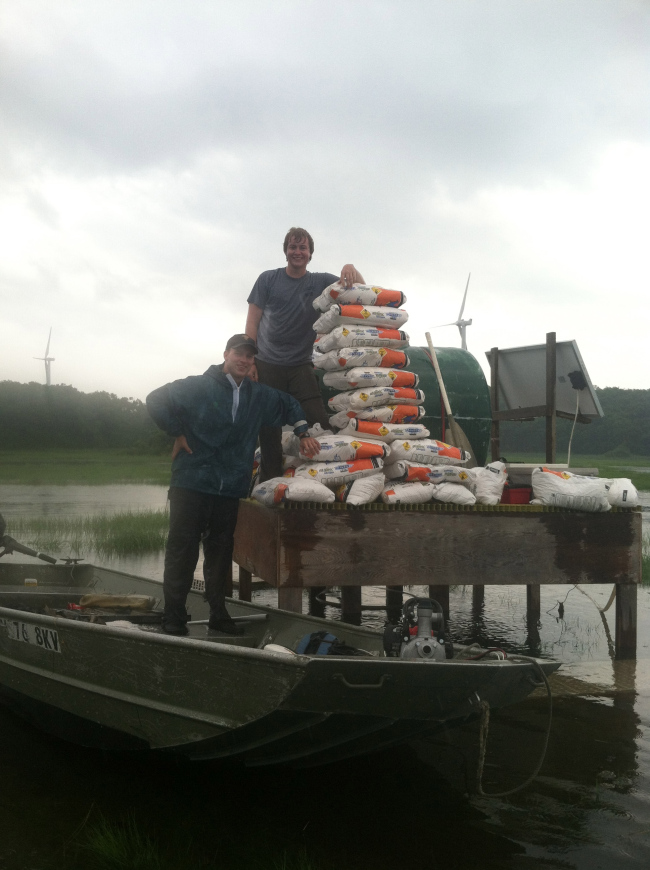
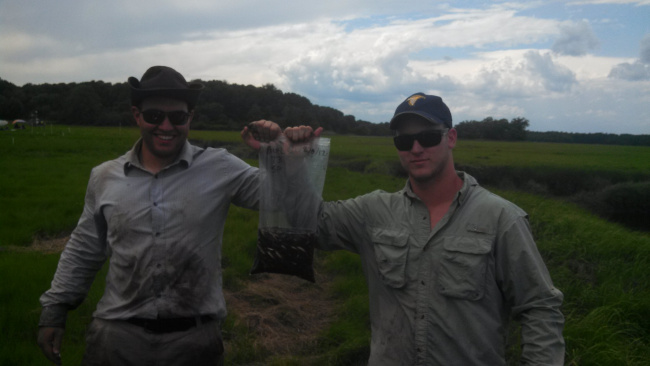
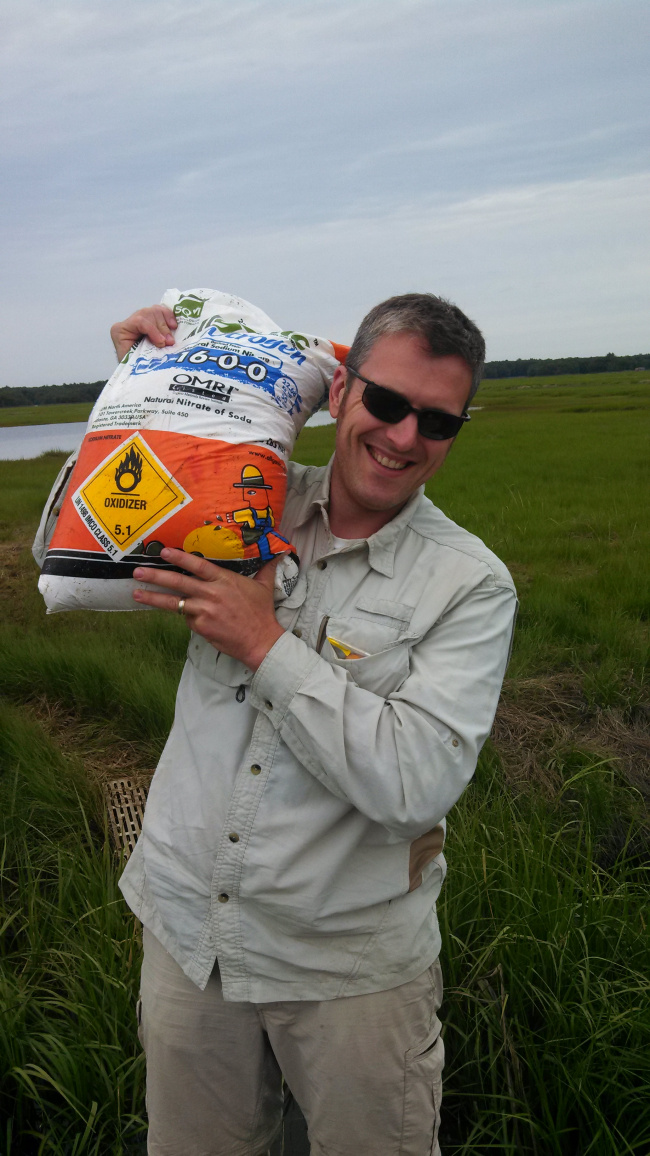
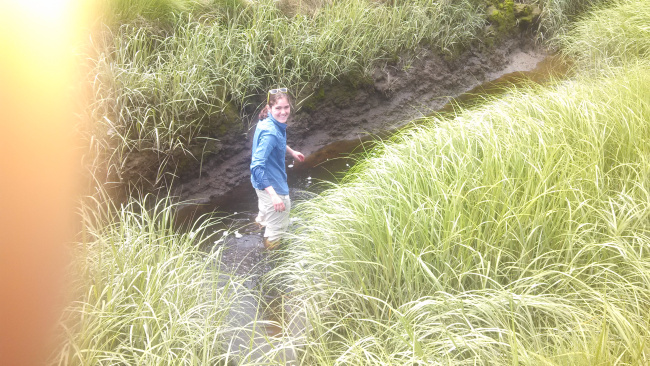
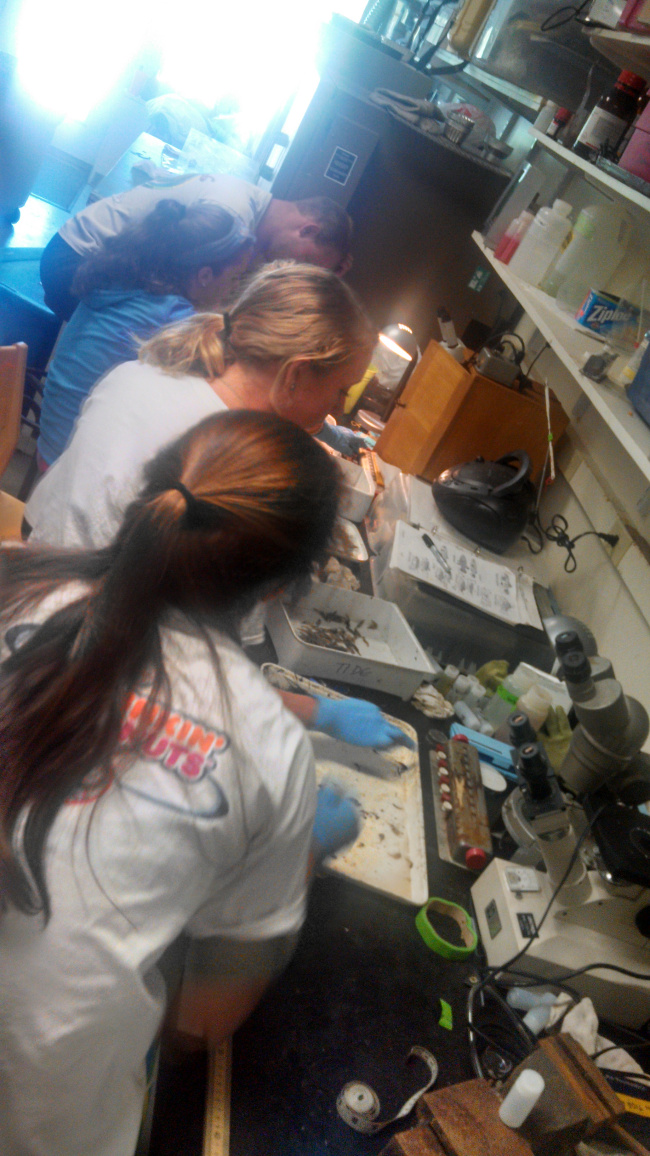
Dreamer of Dreams
Congratulations, Belle (Jess)! I’m intrigued and fascinated by your project. Nice blog! So proud of you!
Dana Haggett
This is such a cool project! You must get pretty muddy. Approx. how much fertilizer do you dump? Doesn’t that effect the streams negatively?